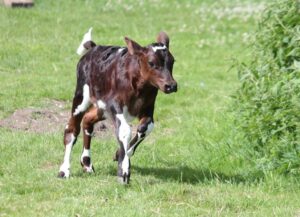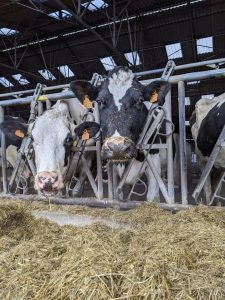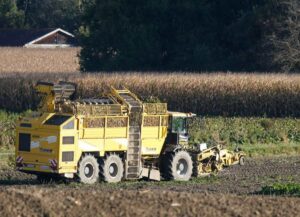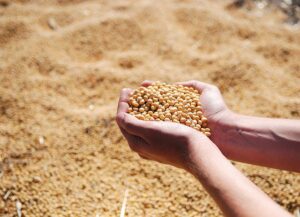Nuria Garcia
Whey permeate (WP) is a low-protein co-product derived from whey. It is obtained by the ultrafiltration of sweet whey and is high in lactose, glucose and galactose.
To meet the high energy needs of lactation, dairy cows are offered starch-rich diets, mainly from cereal grains. Whey permeate is used in the feeding of dairy cattle as a cereal grain replacement, it is an energy dense byproduct, which reduces feed costs, improves the energy balance (i.e. protein/energy in the rumen), increases the digestibility and palatability of the diet, and improves feed efficiency.
In addition, it has been observed that WP increases the molar proportions of butyrate and reduces those of acetate and propionate in the rumen. Although ruminal microorganisms ferment sugar faster, this does not appear to cause a decrease in ruminal pH, probably due to the increased absorption rate of volatile fatty acids. In fact, the incorporation of sugars in the diets of lactating cows maintains or slightly increases ruminal pH, promoting the growth of fiber-degrading bacteria and those that utilize lactate.
Some studies have reported an increase in dry matter (DM) intake when lactose is incorporated in the diet of lactating cows. Most experiments however have found no differences in milk production when WP was incorporated in the diet. A review of 21 published articles conducted in 2017 however, reported a positive response to supplemental dietary sugars in cows producing in excess of 33 kg of milk/day. The results also suggested that this response was more likely to happen in diets based on corn silage, and with a concentration of non-fibrous carbohydrates below 37%.
An experiment published in Applied Animal Science in August 2020 (Bernard et al., 2020), had the objective of evaluating the effects of substituting dietary starch (from finely ground corn) with WP sugars on high-production dairy cows in early lactation.
A total of 48 cows (21 primiparous, 27 multiparous) at the beginning of their lactation (37 days in milk, DIM) and with an average milk production of 36.7 kg, were allocated to one of three experimental diets, over a period of 12 weeks.
The diets were formulated to meet the energy and protein requirements of a 612 kg Holstein cow producing 43 kg of milk/d with 3.5% fat and 3.0% protein. The three main ingredients of the diets were corn silage, alfalfa hay and ground corn grain. In two of the diets WP was used to partially replace ground corn, and supply supplemental sugars:
- Control diet (CONT): 0% WP
- 3WP diet: 3.1% sugar from WP
- 6WP diet: 6.1% sugar from WP
The WP contained 70% total solids on a dry basis, 86.5% sugars, 3% protein, 0.4% fat, 9% ash, and an estimated net energy (NEL) of 2.01 Mcal/kg. Lactose supplied 36% of the total WP and the remaining 64% came from glucose and galactose.
The three experimental diets had similar concentrations of protein, fiber, lignin and ash. As ground corn was replaced with WP, the starch concentration of the diets decreased, and the sugars increased. The average sugar concentrations were 3.0, 6.1 and 9.1% on a DM basis and the starch concentrations were 29.2, 26.2 and 23.2% for CONT, 3WP and 6WP diets, respectively.
The cows were individually fed the control diet from 12-36 DIM and data were collected during the two weeks prior to the study to be used as covariates for statistical analysis. At 36 DIM, cows were randomly assigned over a 10-week period to one of the three treatments according to parity and calving date.
Whey permeate does not affect milk production
The authors did not observe differences in DM intake across diets, with an average of 22.0 kg/d. There were also no differences in milk production (39.8 kg/d) or composition (4.3% fat and 2.62% protein).
The production of proteins and non-fat solids tended to decrease in WP-fed cows (1.04, 1.07 and 1.02 kg/d protein in CONT, 3WP and 6WP, respectively; and 3.34, 3.35 and 3.21 kg/d for non-fat solids). There were also no differences in feed efficiency or changes in body weight or body condition score.
Conclusion
These results showed that ground corn in diets at the beginning of lactation can be replaced by WP without affecting milk production or composition, body weight or body condition score. However, a downward trend in milk protein and lactose production was observed in cows fed the higher WP (6WP) diet.
Reference
Bernard JK, Kertz AF, Tao S, Soderholm C. 2020. Effects of replacing finely ground corn with whey permeate on the performance of early and mid-lactation dairy cows. Applied Animal Science 36:495–502.
© 2020 Dairy Research Review. All Rights Reserved.









